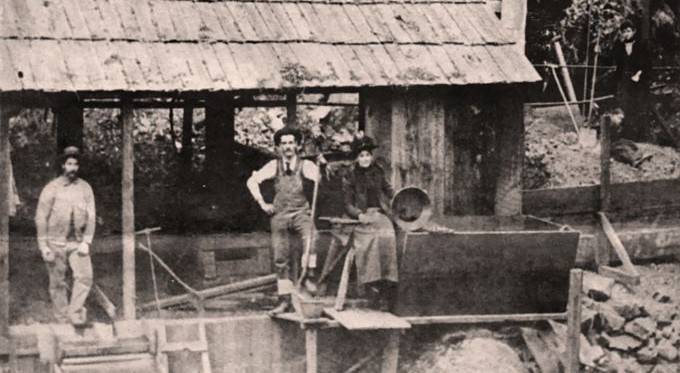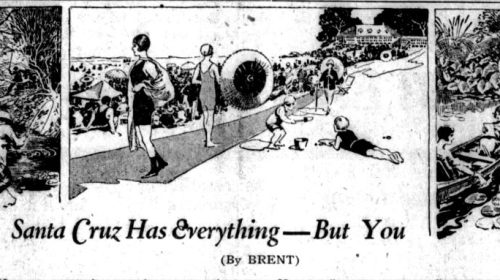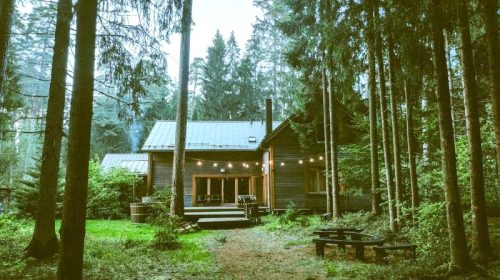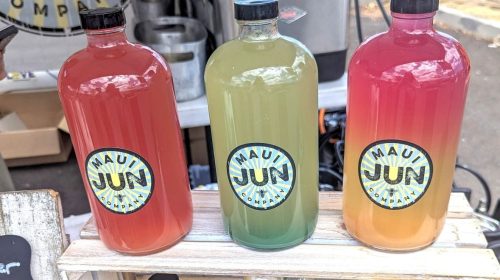Gold Fever: Untold stories of the Califonia and Santa Cruz Gold Rushes
by Lisa Robison
In 1853, Dr. John Boardman Trask, California’s state mineralogist, embarked on his second geological survey of the state, this time with a focus on the coastal counties and parts of the Sierra Nevada “embracing their resources in agriculture and mining.” He surveyed Santa Cruz County sometime between June 23 and October that year. He noted that four of the creeks in the county, the San Lorenzo, Zayante, Soquel, and San Augustine would “furnish a sufficient quantity of water for milling purposes.”
On some early maps, the San Lorenzo River is labeled as San Augustine Creek and further into his report Trask talks about the geology of the upper Rio San Augustine clearly describing the San Lorenzo watershed. He mentions the quartz rock cutting through Serpentine and other rocks and states “‘That when the two series are found in contact, either as dikes of great length, or smaller views, one, or both is always auriferous.’ And such has proved to be the fact in the case before us …” Auriferous means “containing gold.”
It was known that there was gold in Santa Cruz County, but not that there was enough to make extracting it a viable business. This changed on July 26, 1853. On July 29, Georgiana Bruce Kirby wrote in her diary “There is considerable excitement just now about the discovery of gold at Siant [Zayante] and the Rincon and other places in the neighborhood. It has never been found in sufficient quantities as yet to pay for the digging, but now they say they can get $5 a day and that is fair wages. However we do not feel at all certain as to the truth of the case.”
On August 1, the Sacramento Daily Union reported “The whole county is in a state of excitement. Farmers are leaving their fields, and merchants their shops, and all who have been to the mines find the prospect far better than they had hoped for.”
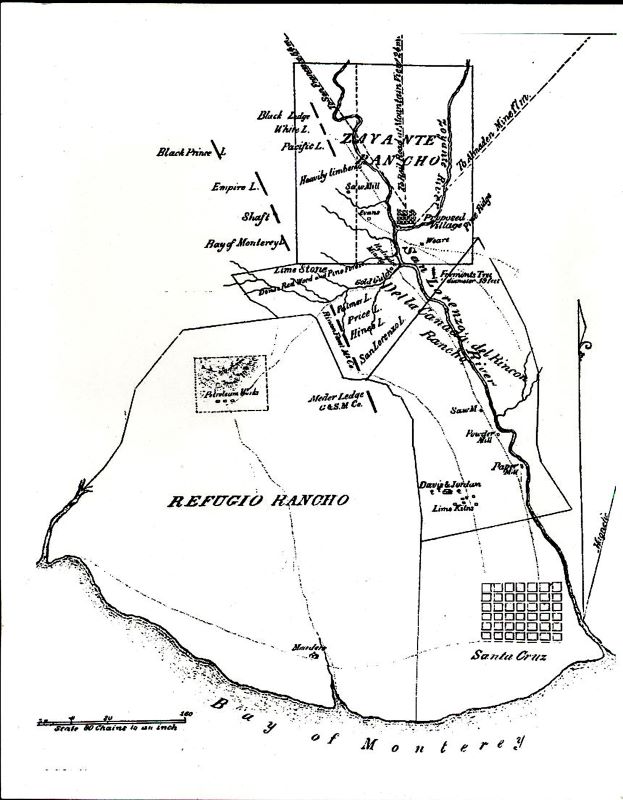
So began Santa Cruz Gold Fever! And Gold Gulch in Felton was aptly named. An 1858 map of Isaac Graham’s Zayante Rancho labels Fall Creek as Humbug Creek — a term often used when a mining claim does not yield.
A “Golden Boulder” was mined at the Big Bowlder Mine on Isaac Graham’s land. The story of how it was discovered varies, but we do know that the boulder was crushed in an arrastras, a primitive mill for pulverizing ore, and the gold that was extracted yielded in the region of $35,000 to $55,000.
By 1855, it was reported that “a sawmill in the neighborhood is now being adapted to quartz crushing.” Several companies put in stamp mills. These were driven by water, and because water was in short supply, could only be used for a limited number of hours per day. Using a steam engine just didn’t make economic sense.
In May 1856 the Santa Cruz Quartz and Mining District was formed. The mining district’s journal of claims is in the collection of the Santa Cruz Museum of Art & History and is on exhibit at the San Lorenzo Valley Museum’s Faye G. Belardi Memorial Gallery in Felton as part of the Gold Fever! exhibition. The first claim filed was that of the El Dorado Mining Company on May 7, 1856.
There are over 100 claims in the Santa Cruz Mountains documented in the journal, the majority of which, over 50, were filed in 1863. And it was in 1863 that the mining district was re-established as the Santa Cruz Mining District with a new set of by-laws and a resolution to accept the resignation of the recorder of the district, Israel C. Wilson, who “has neglected since the year 1856, to discharge the duties of said office …”
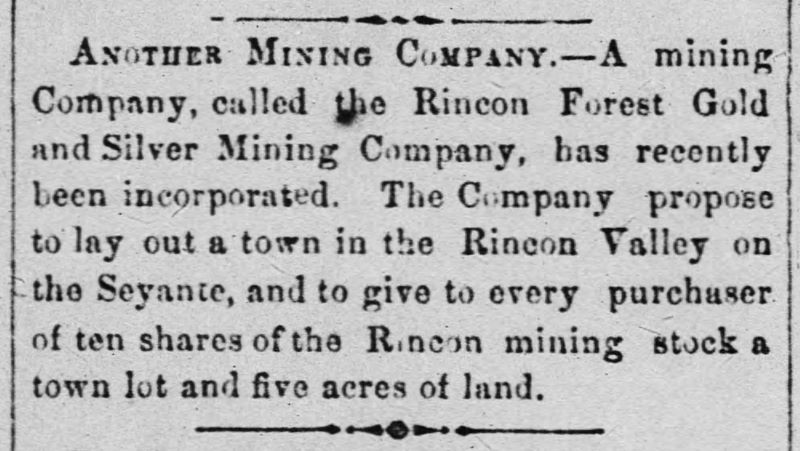
A notice in the Santa Cruz Sentinel on Saturday, january 16, 1864
In 1864, the Rincon Forest Gold and Silver Mining Company offered holders of ten shares of stock a town lot and five acres of land. This map, courtesy of the Bancroft Library, UC Berkeley, was created for that company. You can see the gold ledges and the proposed new village on the opposite side of the river from what eventually became the town of Felton.
Gold company ledges on this map include: Black Prince, Empire, Shaft, Bay of Monterey, Meder, Black, White, Pacific, Palmer, Price, Hines, and San Lorenzo. Also note the mention of Hydraulic Mining on Shingle Mill Creek.
In 1872, a new road from Davis & Cowell’s lime kilns to the McLaughlin Ranch was opened. Empire Grade, was named for the Empire Gold and Silver Mining Co. “… a good mountain road. There are several settlements on the road or near it, above the gold mine tunnel.”
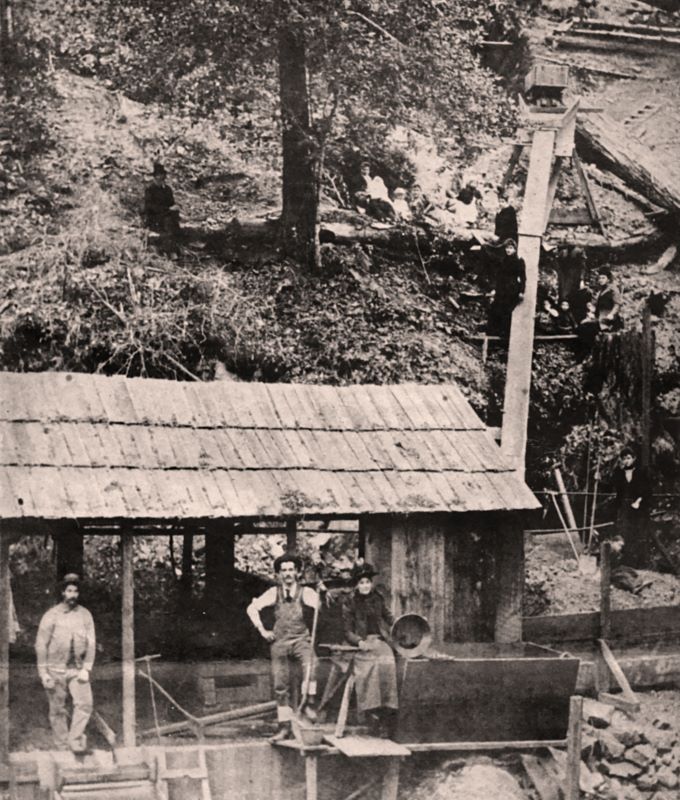
The Stribling Mine in the Santa Cruz Mountains
This story of the “Golden Boulder” was reprinted in the Santa Cruz Sentinel on February 16, 1887. Just a few days later, on an adjacent ranch Philip Stribling discovered gold. The Stribling mine was the longest operating mine in the region from 1887 to around 1900, but then intermittently up to around 1934.
There are multiple descriptions of Stribling’s various stamp mills. In 1891, the Stribling mill is noted as having a 5-stamp mill with an engine. In 1897, it is described as using “two small stamps” run by an 11-foot diameter overshot water wheel fed by a 4-inch flume and as being “the smallest stamp mill in the world.” It could grind about 500 pounds of rock per day. The stamp mill was later replaced with a cannon ball mill which “gave no satisfaction” however. In 1898, a new 3-stamp mill was being erected.
To find out more about the mining operations on Ben Lomond Mountain visit the above-mentioned Gold Fever! Untold stories of the Califonia and Santa Cruz Gold Rushes exhibition at the San Lorenzo Valley Museum’s Faye G. Belardi Memorial Gallery at 6299 Gushee Street in Felton. Open Thursdays through Sundays from 1:00 to 4:00 pm now through December 2024.
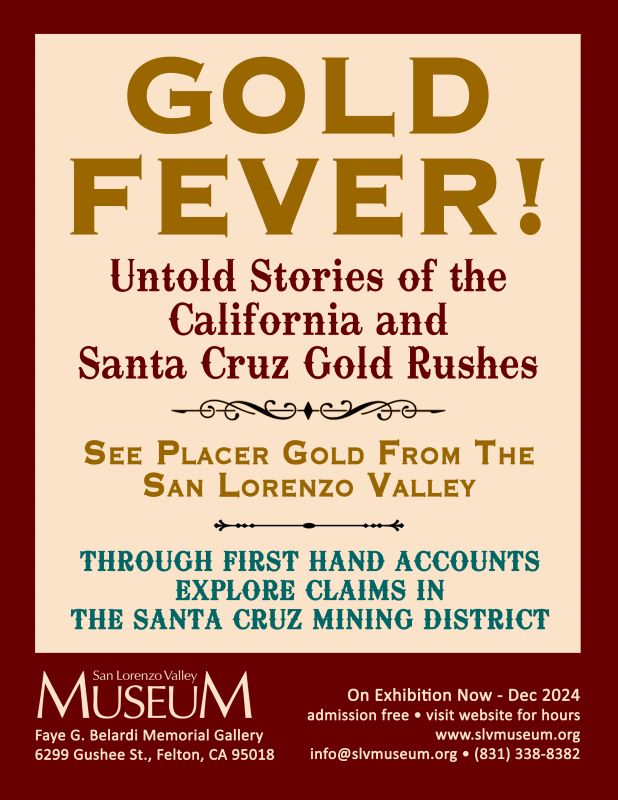
Images contributed by Lisa Robinson, SLV Museum

